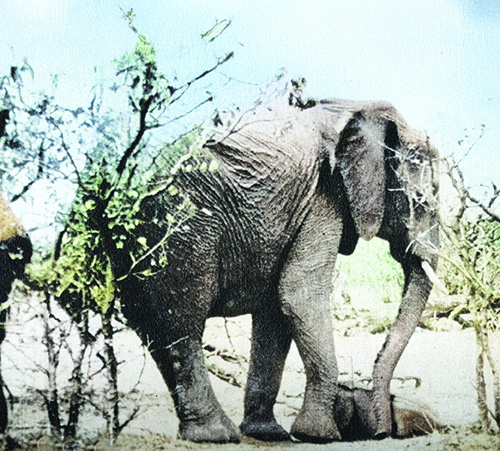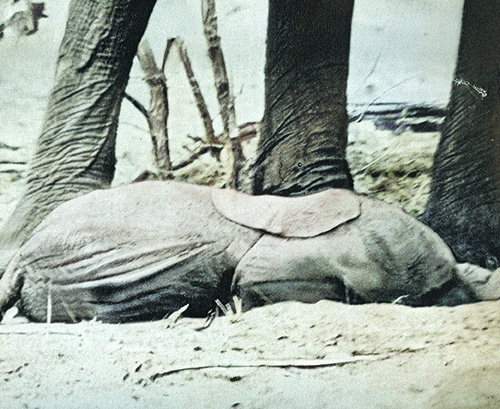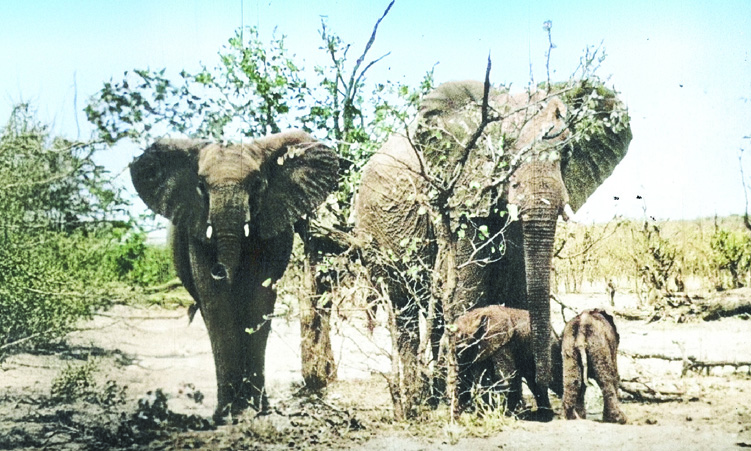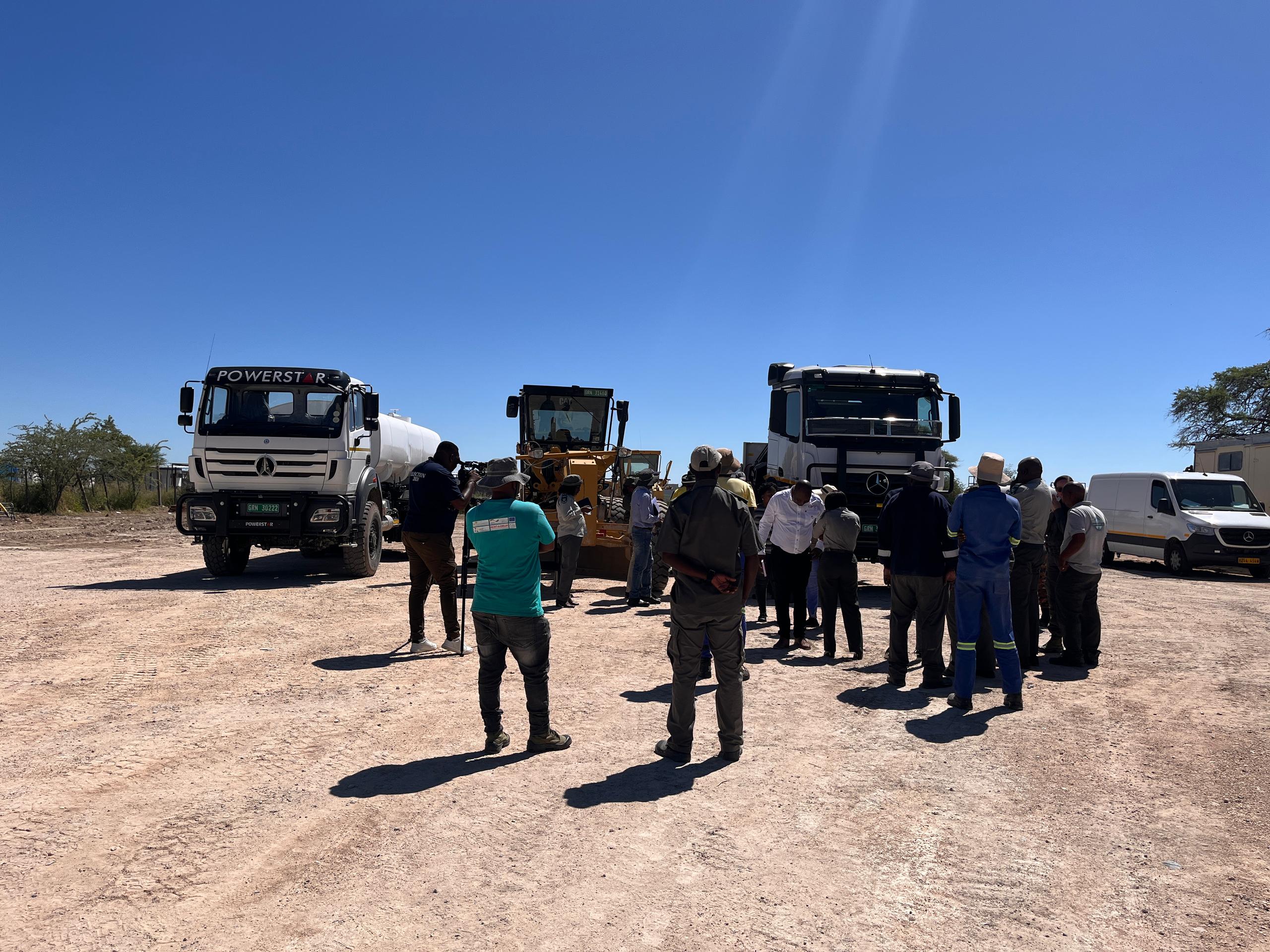While paging through a dog-eared issue of Custos, the very informative old South African national parks magazine, an article about the birth of elephant twins in the Kruger National Park caught my attention.
Although I am aware that elephants are pregnant for 22 months, I had never realised that the birth of twins is extremely rare – comprising less than 1% of births.
Humans, in comparison, give birth to twins much more often, 17% of the time.
The 1966 elephant birth documented in the magazine was witnessed by several amazed tourists who wrote letters to the conservation staff to describe the incident.

The letters were rediscovered by the park’s chief research officer seven years later in 1972, when he was looking through some old files, and Custos decided to share the fascinating story with its readers.
Along the roadside en route to Letaba, the tourists noticed the heavily pregnant elephant cow, accompanied by a smaller cow.
The rest of the herd browsed in the bushes nearby. The smaller cow helped to support the large cow, pressing her side gently at intervals, while she groaned and churned up soil into loose sand.
This puzzled the onlookers, but they would soon understand her intention.
After a period of groaning and straining, the mother gave birth to the first baby elephant, then used her trunk to squirt the loose sand over it to remove the mucus and blood.
The accompanying helper, ‘aunt’ or ‘midwife’, gently nudged the baby with her trunk to encourage it to stand. The mother shredded and then flung the afterbirth into the air.
Forty minutes later, the mother dropped onto her haunches again and gave birth to a second calf, which was larger than the first, cleaning it in the same manner.
The elephant helper continued to be of assistance, chasing away the vultures which had been attracted by the afterbirth. The two cows nudged the twins to their feet using their feet and trunks. The calves flopped over at first, eventually managing to stand, leaning against the legs of the cows.
The ‘aunt’ helped them to reach the mother’s teat and suckle. Two hours later, they took their first shaky steps into the bush.
The tourists watched in awe, amazed at the cleanliness of the birth procedure and the loving manner in which the twins had been nudged to stand and suckle in such a short time.

It was an event that would stay with them for years afterwards.
After reading the absorbing article, I read more about twin births in elephants (Asian and African) and the rarity of them, the twins first having to survive the gestation and suckling period, which places huge strain on the mother to carry the hefty calves and then produce sufficient milk to feed them.
After the birth, the herd has to protect the calves from large predators. When the birth of elephant twins has been noticed across the world, the uncommon event inevitably makes the news.
Over the years there have been twin elephants documented in Thailand, Kruger National Park, where two sets of twins were born in one herd, and most recently, on 2 January, in the Shimba Hills National Reserve in Kenya, the third twin birth in the country in a three-year period, beginning the lives of the twins with the freshness and promise of the new year.
If you enjoyed this article and want to read more intriguing stories, keep up with all of our current content on the Padlangs platform.
Scan the QR code below to not miss out on any of the stories we’re sharing.
Stay informed with The Namibian – your source for credible journalism. Get in-depth reporting and opinions for
only N$85 a month. Invest in journalism, invest in democracy –
Subscribe Now!










